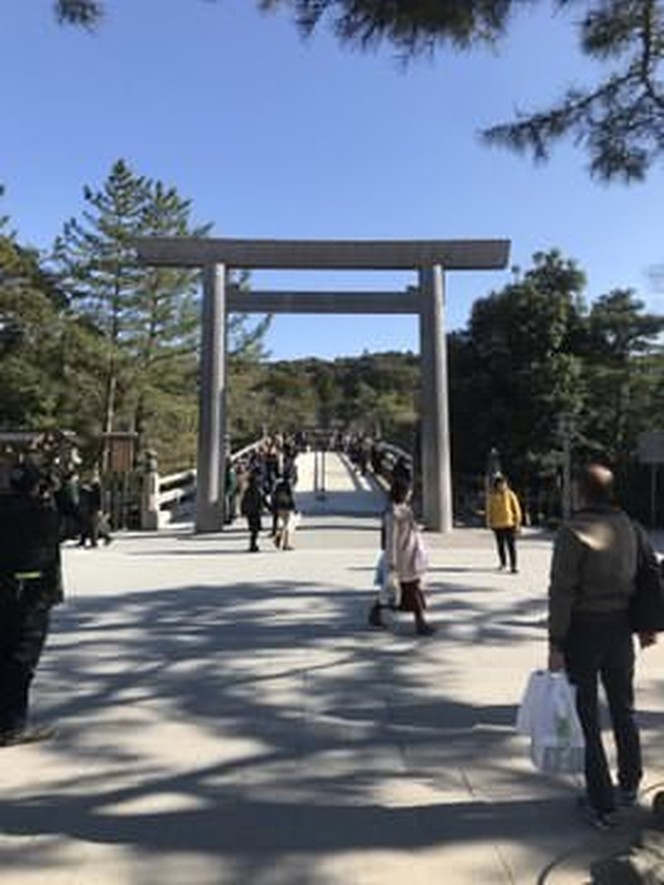In his second week in Japan Andrew visits Shinto shrines in Ise province, and reflects on Japanese attitudes towards tradition and progress.

Am I looking at something that’s 2000 years old or 7? I’m certainly getting a glimpse at something uniquely Japanese but it’s a theme that has recurred again and again during my time here; in museums, galleries, buildings, even outside restaurants, the word that stands out is: Replica.
In this particular instance I’m at the Shinto Shrines in Ise Province. The Soul of Japan. Possibly the only place to see original Japanese architecture before the influence of Buddhism filtered into the country. The inner and outer shrines, dedicated to the Kami spirits of the Sun and industry/harvest, and built 2000 and 1500 years ago respectively, are rebuilt from scratch every 20 years, as per tradition, and what stands before me is the 62nd iteration completed in 2013. But at the same time it’s exactly as it was in the beginning. A philosopher’s axe, with the skills and trades required for their construction remembered, passed down, and revered.

Kinkakuji (The Golden Pavilion) in Kyoto was created in the 14th century as the retirement home of the Shogun Ashikaga Yoshimitsu but has been sieged many times since then, (none more so perhaps than the day I was there, by camera hungry tourists. I was one too. I can’t lie). It has been rebuilt many times as a result of these wars and was indeed burnt to the ground in 1950 by a novice Monk and recreated from the ashes once more - there even stands a phoenix on the top. Each tier is said to represent a different era of Japanese rule and architecture.
These it feels, perhaps more than anything, encapsulates the spirit of Japan. An absolute respect for tradition and ancestral heritage tied to a desire for progress and to be always moving forward. It’s a challenging balance that Japan tiptoes with real skill.

The entrance to Shinto shrines are decorated with barrels of sake, racked up, and donated by the various makers throughout the land as a gift to the Kami enshrined within. The spirit of Japan really is everywhere.
This residency is supported by the British Council Scotland and Creative Scotland partnership to take part in the British Council’s UK in Japan Season 2019-20. This project is additionally made possible through support from The Great Britain Sasakawa Foundation.

